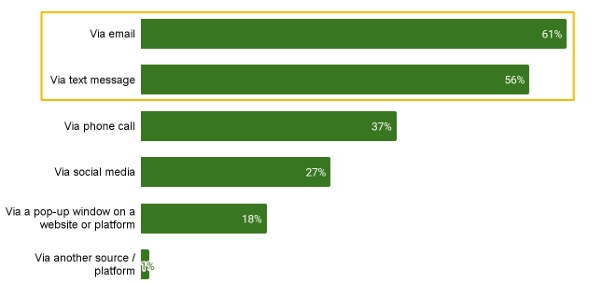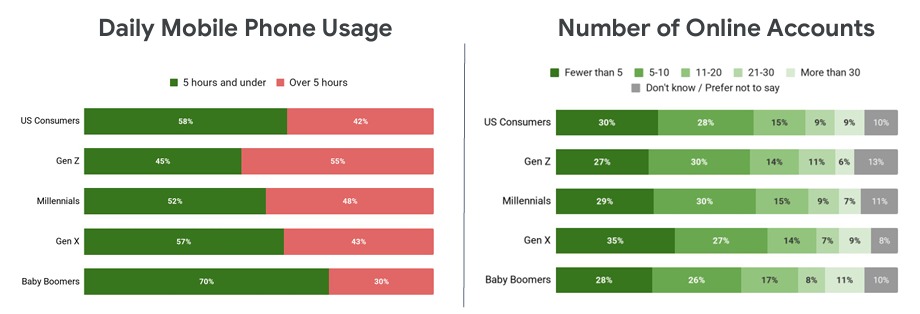
The Alarming Rise in Cybersecurity Threats: What Google’s Latest Survey Reveals About US Consumers
Google Survey Reveals 60% Rise in Cybersecurity Threats Targeting US Consumers – Google Survey Reveals 60% Rise in Cybersecurity Threats Targeting US Consumers
The Alarming Rise in Cybersecurity Threats: What Google’s Latest Survey Reveals About US Consumers
The digital security environment has become increasingly dangerous for American consumers, with Google’s latest comprehensive survey revealing troubling trends that demand immediate attention. The collaboration between Google and Morning Consult has uncovered statistics that paint a concerning picture of our current cybersecurity state.
 The Growing Threat Environment
The Growing Threat Environment
Over 60% of US consumers perceive a significant increase in scam attempts over the past year, with one-third personally experiencing data breaches. This dramatic surge in cybercriminal activity has not gone unnoticed by users, who are increasingly becoming targets of sophisticated attack campaigns designed to steal personal information and login credentials.
The FBI reports that online scams generated a record $16.6 billion in losses last year, representing a 33% increase from the previous year. This exponential growth demonstrates that cybercriminals are not only becoming more active but also more successful in their fraudulent endeavors.

(Prevalence of Online Scams – Source: Google | Morning Consult Scams and Protections)
 Primary Attack Vectors
Primary Attack Vectors
Text message-based scams have emerged as the primary attack method, though 61% of respondents reported being targeted through email campaigns designed to steal personal information. These attacks typically involve urgent requests for sensitive data, suspicious links, and carefully crafted phishing attempts that mimic legitimate services to deceive users into surrendering their authentication credentials.
The sophistication of these attacks has evolved significantly, with cybercriminals employing multiple attack vectors simultaneously to increase their success rates. Social engineering techniques have become more refined, making it increasingly difficult for average users to distinguish between legitimate communications and malicious attempts.

(Sources of Online Scams – Source: Google | Morning Consult Scams and Protections)
 Generational Security Gaps
Generational Security Gaps
The survey reveals a concerning security paradox where different age groups respond to evolving threats in dramatically different ways. Over 60% of Generation X and Baby Boomers still rely primarily on password-based authentication systems, creating significant attack surfaces for cybercriminals. These older authentication methods, while familiar to users, are increasingly susceptible to phishing attacks and data breaches.
In contrast, digitally-native Gen Z users are bypassing outdated security norms like passwords, opting for more advanced authentication tools such as passkeys and social sign-ins. This generational divide creates a complex security environment where different user groups face varying levels of vulnerability.
 User Confidence vs. Reality
User Confidence vs. Reality
While over 80% of users report feeling confident in their ability to spot scams by recognizing requests for personal information and suspicious links, the actual implementation of robust security measures varies dramatically across age groups. This confidence gap represents a critical vulnerability that cybercriminals are actively exploiting.
The disparity between perceived security awareness and actual protective behavior highlights a fundamental challenge in cybersecurity education and implementation. Many users believe they can identify threats but continue to use vulnerable authentication methods and security practices.

(Generational Analysis -Source: Google | Morning Consult Scams and Protections)
 Modern Security Solutions
Modern Security Solutions
Half of Americans spend at least five hours on their phones per day, but most users only report managing 10 or fewer online accounts, likely driven by social sign-ins which allow people to navigate the web easily and safely. This trend toward consolidated authentication methods represents both an opportunity and a risk for security professionals.
Google’s advanced protections block more than 99.9% of spam, phishing and malware from Gmail, while AI-powered features like Scam Detection in Google Messages help flag crypto, financial, toll road, and gift card scams. These automated security measures demonstrate the importance of leveraging technology to protect users from evolving threats.
 How CinchOps Can Help
How CinchOps Can Help
The escalating cybersecurity threat environment demands professional guidance and comprehensive protection strategies that go beyond individual user awareness. CinchOps understands that small and medium-sized businesses face unique challenges in implementing robust security measures while maintaining operational efficiency.
Our cybersecurity experts can strengthen your organization’s security posture through comprehensive managed IT support that includes:
- Advanced threat detection systems that monitor your network 24/7 for suspicious activities
- Employee security awareness training programs to help your team identify and avoid phishing attempts
- Implementation of multi-factor authentication across all business systems to prevent credential theft
- Regular security assessments and vulnerability testing to identify potential weaknesses
- Development of incident response procedures to minimize damage from security breaches
- Ongoing monitoring of your digital infrastructure for emerging threats and suspicious activities
- Email security solutions that block phishing attempts before they reach your employees
- Mobile device management to secure smartphones and tablets accessing company data
With over three decades of experience in IT security implementation, CinchOps provides the expertise and resources necessary to protect your business from the sophisticated threats targeting American consumers and businesses today.
![]()
 Discover More
Discover More 
Discover more about our enterprise-grade and business protecting cybersecurity services: CinchOps Cybersecurity
Discover related topics: Critical Windows Secure Boot Vulnerabilities Leave Millions of Systems Exposed to Bootkit Attacks
For Additional Information on this topic: Microsoft to Block Attachments in Outlook Web & Windows Used by Threat Actors
![]()
FREE CYBERSECURITY ASSESSMENT



